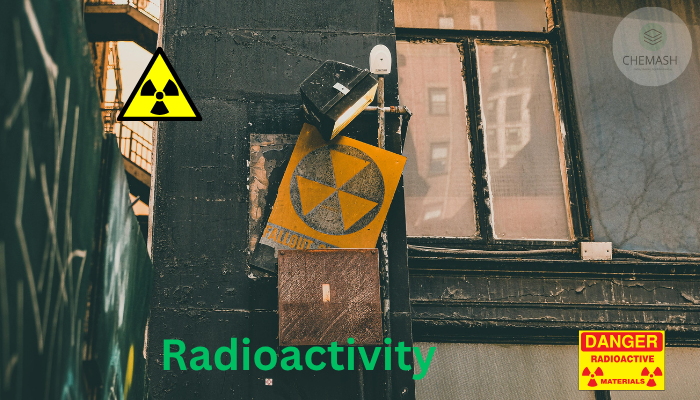Radioactivity
Radioactivity is a natural phenomenon in which unstable atomic nuclei spontaneously emit particles or electromagnetic radiation to achieve a more stable configuration. This process involves the transformation of one element into another and is a cornerstone concept in nuclear chemistry and physics.

Discovery of Radioactivity
Radioactivity was discovered in 1896 by Henri Becquerel when he observed that uranium salts emitted invisible rays capable of blackening photographic plates. Later, Marie and Pierre Curie expanded this discovery by isolating highly radioactive elements like polonium and radium.
What Causes Radioactivity?
Atoms become radioactive when their nuclei have an unstable combination of protons and neutrons. To become stable, the nucleus emits energy or particles, transforming into a different element or isotope.
Types of Radioactive Emissions
- Alpha (α) particles: Helium nuclei (2 protons, 2 neutrons) – low penetration, highly ionizing.
- Beta (β) particles: High-energy electrons or positrons – moderate penetration, moderate ionizing power.
- Gamma (γ) rays: High-energy electromagnetic waves – high penetration, low ionizing power.
Note: Unlike chemical reactions, radioactive decay is unaffected by temperature, pressure, or chemical state.
Half-Life
The half-life of a radioactive isotope is the time required for half the atoms in a sample to decay. It is a unique property of each radioactive element and can range from fractions of a second to billions of years.
Example: Carbon-14 has a half-life of 5730 years and is used in archaeological dating.
Nuclear Transmutation
During radioactive decay, an unstable nucleus transforms into a new nucleus. This change, called nuclear transmutation, can result in a new element being formed. For example:
Example:²³⁸U → ²³⁴Th + ⁴He (Uranium to Thorium via alpha decay)
Real-World Applications of Radioactivity
- Medical Field: Cancer treatment (radiotherapy), diagnostics (PET scans, radioactive tracers)
- Carbon Dating: Determining age of ancient artifacts using C-14
- Energy Production: Controlled fission in nuclear reactors
- Industrial Uses: Thickness gauges, leak detection, sterilization of medical equipment
- Astronomy: Understanding cosmic radiation and stellar compositions
Hazards and Safety
While radioactivity has many benefits, exposure to high levels of ionizing radiation can damage living cells, cause mutations, and lead to illnesses such as cancer. It is essential to handle radioactive materials with strict safety protocols:
- Use of lead shielding and protective clothing
- Proper storage and containment of radioactive waste
- Monitoring exposure with dosimeters
- Following regulatory guidelines strictly
Radioactivity bridges the worlds of physics, chemistry, medicine, and energy — empowering modern science while demanding careful responsibility.
